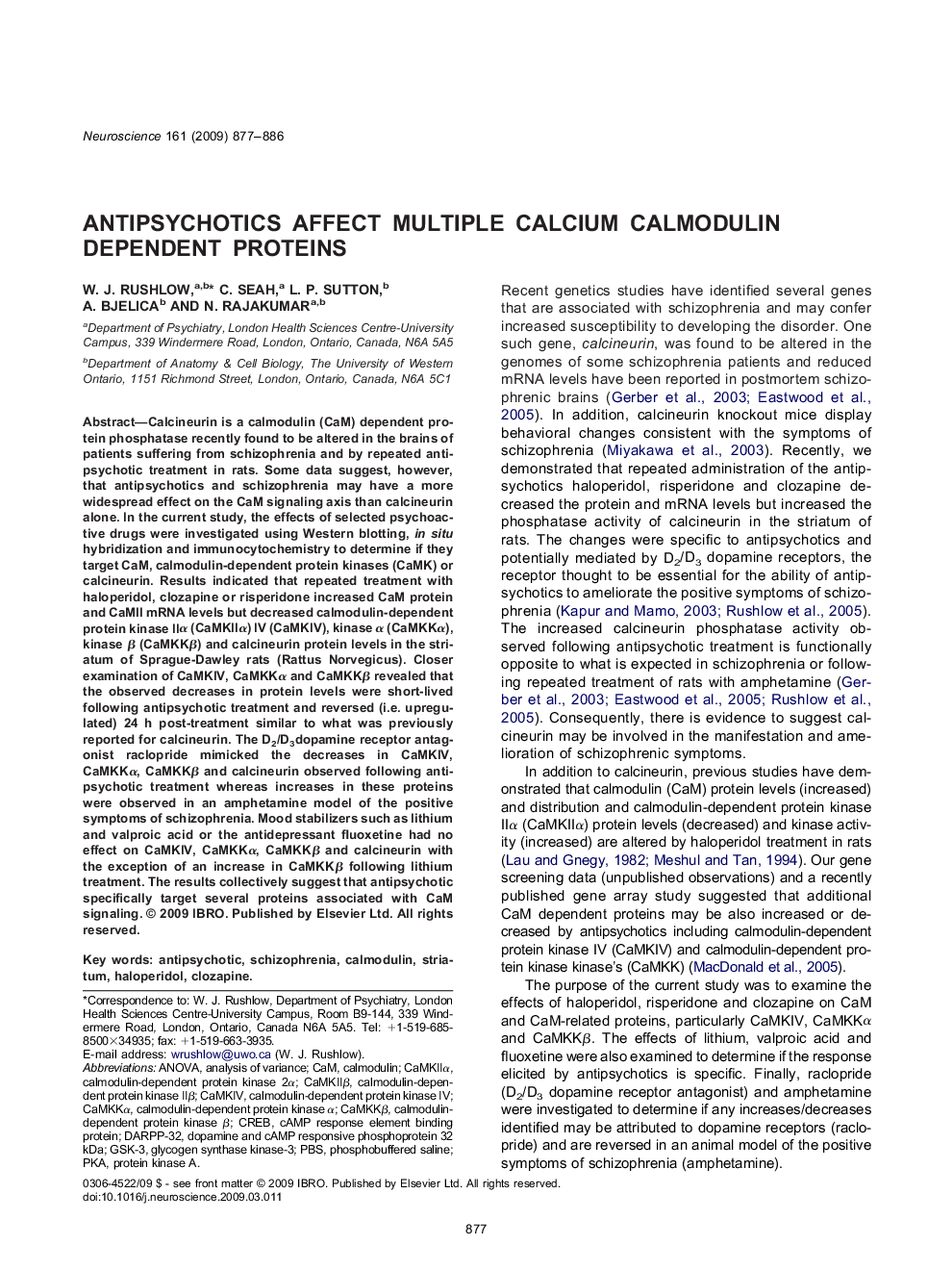| Article ID | Journal | Published Year | Pages | File Type |
|---|---|---|---|---|
| 4340020 | Neuroscience | 2009 | 10 Pages |
Calcineurin is a calmodulin (CaM) dependent protein phosphatase recently found to be altered in the brains of patients suffering from schizophrenia and by repeated antipsychotic treatment in rats. Some data suggest, however, that antipsychotics and schizophrenia may have a more widespread effect on the CaM signaling axis than calcineurin alone. In the current study, the effects of selected psychoactive drugs were investigated using Western blotting, in situ hybridization and immunocytochemistry to determine if they target CaM, calmodulin-dependent protein kinases (CaMK) or calcineurin. Results indicated that repeated treatment with haloperidol, clozapine or risperidone increased CaM protein and CaMII mRNA levels but decreased calmodulin-dependent protein kinase IIα (CaMKIIα) IV (CaMKIV), kinase α (CaMKKα), kinase β (CaMKKβ) and calcineurin protein levels in the striatum of Sprague-Dawley rats (Rattus Norvegicus). Closer examination of CaMKIV, CaMKKα and CaMKKβ revealed that the observed decreases in protein levels were short-lived following antipsychotic treatment and reversed (i.e. upregulated) 24 h post-treatment similar to what was previously reported for calcineurin. The D2/D3dopamine receptor antagonist raclopride mimicked the decreases in CaMKIV, CaMKKα, CaMKKβ and calcineurin observed following antipsychotic treatment whereas increases in these proteins were observed in an amphetamine model of the positive symptoms of schizophrenia. Mood stabilizers such as lithium and valproic acid or the antidepressant fluoxetine had no effect on CaMKIV, CaMKKα, CaMKKβ and calcineurin with the exception of an increase in CaMKKβ following lithium treatment. The results collectively suggest that antipsychotic specifically target several proteins associated with CaM signaling.
